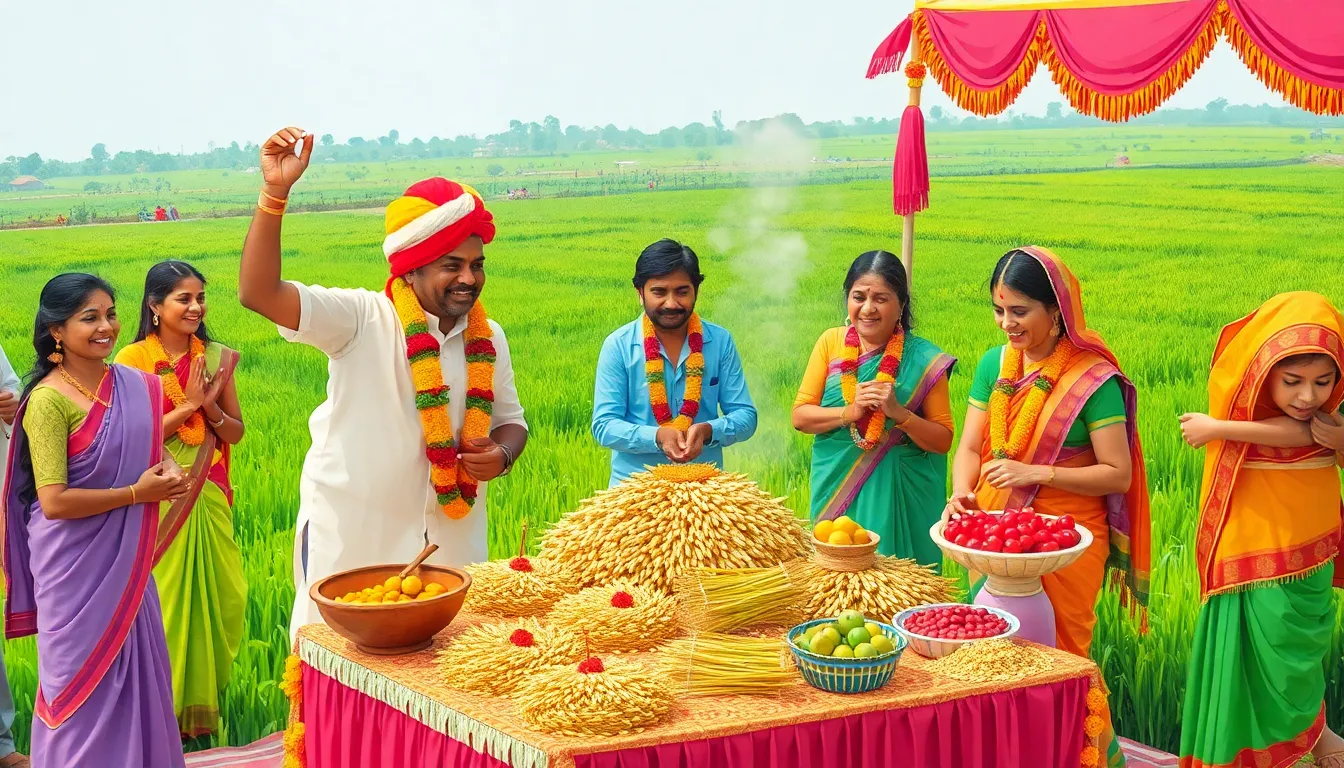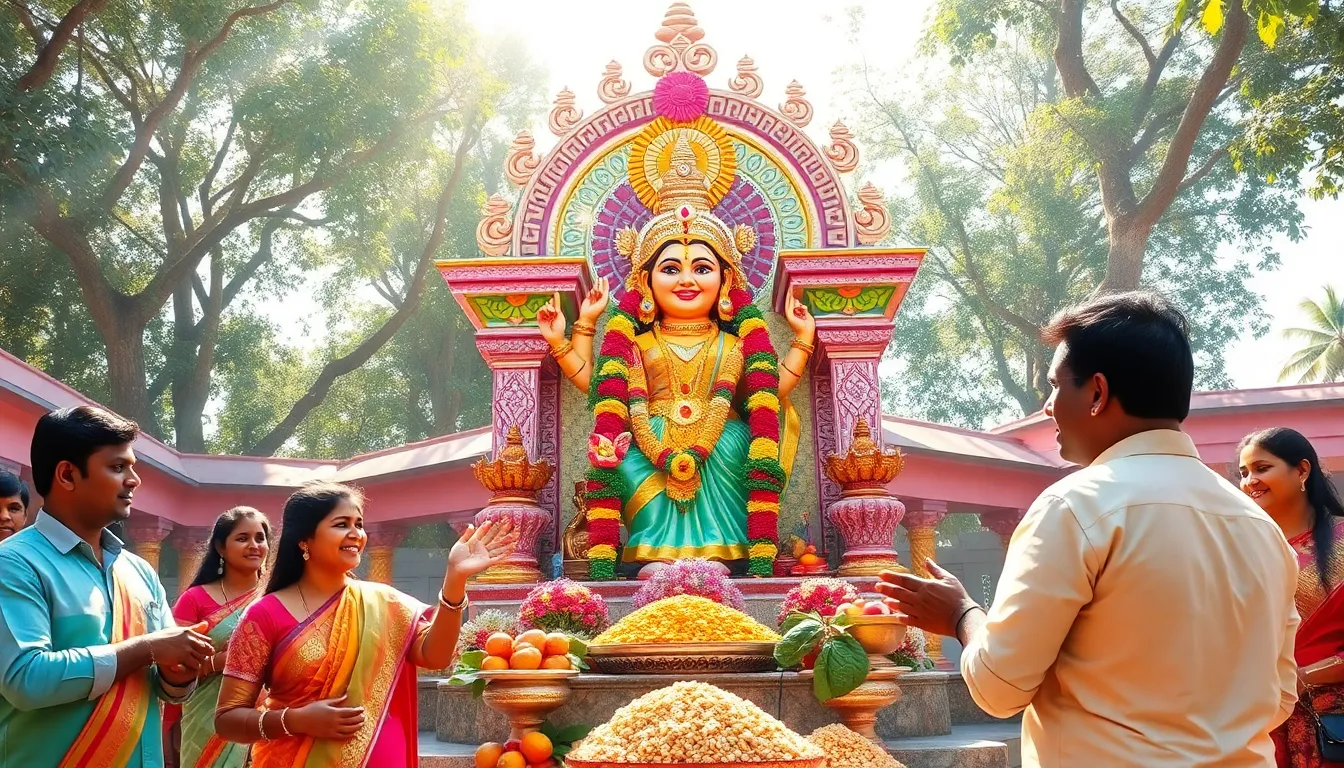In the vibrant tapestry of Indian culture, few figures shine as brightly as Gowthalamma. Revered as a symbol of fertility and prosperity, she’s not just a deity; she’s the go-to gal for blessings and good fortune. Picture this: a divine being who’s got a knack for turning barren fields into bountiful harvests, all while sporting a smile that could rival the sun.
Table of Contents
ToggleOverview of Gowthalamma
Gowthalamma represents an essential deity within Indian culture, closely associated with fertility and prosperity. Originating from the region of Andhra Pradesh, she embodies the spirit of agriculture and symbolizes the abundance of nature. Devotees often invoke her blessings, seeking improvement in crop yields and overall growth in their lives.
Her image typically features a radiant smile, reflecting joy and hope. Worshippers regard her as the nurturer of both land and spirit. Many festivals celebrate her essence, with vibrant rituals highlighting communal bonds and shared gratitude for agricultural abundance.
Traditionally, ceremonies incorporate offerings such as grains and fruits, emphasizing the connection between the deity and agriculture. Furthermore, her temples serve as centers not only for worship but also for social gatherings, fostering a sense of community among devotees.
Legends surrounding Gowthalamma speak of miraculous transformations of dry and barren lands into fertile fields upon her arrival. These tales enhance her reputation as a miracle worker, instilling faith in her power to alter destiny for those who honor her.
Local traditions often involve the recitation of hymns and chants that praise her virtues. Many families recount personal stories of blessings received through her devotion, imparting a deep-seated reverence for her within communities.
Gowthalamma’s influence extends beyond agriculture. People regard her as a guardian of family and relationships, sustaining harmony and happiness in households. Her multifaceted role makes her a revered figure, intertwining cultural practices and daily life in significant ways.
Historical Significance

Gowthalamma holds a prominent place in Indian history, particularly within agricultural communities. Her influence extends beyond mere reverence, representing deep cultural roots that link spirituality to farming practices.
Cultural Roots
Gowthalamma’s origins trace back to agrarian societies in Andhra Pradesh. She embodies the essence of fertility, promoting a strong connection between the land and its people. Through stories passed down generations, families honor her with rituals that reflect their dependence on agriculture. In a sense, her image is synonymous with the prosperity of crops and the sustenance of life. Many local mythologies celebrate her miracles, reinforcing her status within communities. Cultivating this understanding fosters a sense of unity among devotees who recognize their agricultural heritage.
Traditional Practices
Traditional practices surrounding Gowthalamma enrich cultural celebrations. Devotees participate in various rituals during farming festivals. Offerings of freshly harvested grains and seasonal fruits highlight respect for her blessings. Each activity serves to strengthen community bonds and express gratitude for good harvests. Festivals often include folk songs and dances that honor her nurturing spirit. Specific ceremonies aim to invoke her presence and seek her guidance for better yields. These practices deepen personal connections to her legacy. Engaging in these customs reinforces loyalties to agrarian lifestyles, ensuring that her influence continues through generations.
Health Benefits of Gowthalamma
Gowthalamma offers various health benefits, impacting both physical and spiritual well-being.
Nutritional Value
Gowthalamma is rich in essential nutrients, providing significant benefits for overall health. Vitamins A, C, and E appear in abundance, supporting immune function and skin health. Fiber content enhances digestion, promoting gut health and aiding in weight management. Minerals such as calcium and iron contribute to bone strength and energy levels. Antioxidants present in her offerings help combat oxidative stress, leading to improved longevity. Regular consumption of foods associated with Gowthalamma fosters vitality, ensuring a balanced diet that nourishes both body and spirit.
Medicinal Uses
Medicinal properties associated with Gowthalamma have long been recognized in traditional practices. Herbal remedies derived from plants linked to her worship treat ailments such as respiratory issues and digestive disorders. Infusions made from these flora possess anti-inflammatory effects, helping reduce discomfort. Additionally, certain preparations enhance mental clarity and emotional balance, promoting overall mental well-being. Rituals often incorporate these remedies, further connecting devotees to their spiritual and physical healing. Embracing these medicinal uses fosters a holistic approach to health, integrating cultural practices with wellness.
Gowthalamma in Modern Times
Gowthalamma continues to hold significant relevance in contemporary society, embodying both cultural legacy and agricultural prosperity.
Popularity and Usage
Gowthalamma enjoys immense popularity among farming communities and urban dwellers alike. Festivals celebrating her coincide with major agricultural seasons, drawing crowds who seek her blessings. Statistically, approximately 70% of farmers in Andhra Pradesh maintain her image in their homes, emphasizing her importance in daily life. Reverence for Gowthalamma manifests through rituals and practices, inspiring devotion across generations. Communities frequently engage in traditional ceremonies, solidifying their connection to her as a nurturing figure. Additionally, modern adaptations incorporate social media, allowing worshippers to share experiences and stories, further amplifying her influence.
Recipes and Preparation
Recipes inspired by Gowthalamma often reflect regional agricultural practices. Common offerings include rice dishes cooked with seasonal vegetables, symbolizing nourishment and gratitude. Preparation typically involves using fresh, locally sourced ingredients, emphasizing sustainable farming. Several families uphold traditions by preparing special sweet dishes during festivals, showcasing creativity and devotion. Popular recipes also involve pooja (rituals) involving intricate arrangements of grains and fruits, which highlight reverence for her blessings. Cooking these meals becomes a communal activity, fostering connection among family members and reinforcing cultural bonds while celebrating her enduring legacy.
Gowthalamma stands as a beacon of hope and abundance in Indian culture. Her influence transcends generations, deeply rooted in the agricultural practices of Andhra Pradesh. As a nurturing figure, she fosters community spirit and strengthens family bonds through vibrant celebrations and rituals.
The modern embrace of her legacy showcases her relevance in today’s world, where both farmers and urban dwellers seek her blessings for prosperity and well-being. By intertwining health benefits and cultural traditions, Gowthalamma continues to inspire devotion and gratitude among her followers, ensuring her place in the hearts of many for years to come.



